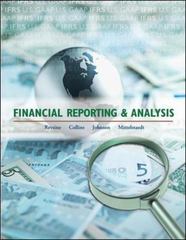
Answer to the best of your knowledge. You can use screenshots for information. thank you
empirical estimates and results:
a. What type of supply and demand elasticities (i.e., very elastic, inelastic, etc.) do the authors suggest from the empirical evidence of this market?
b. Is more of the tax cost passed to the consumers or borne by the firms under these assumptions?
c. Summarize the 3 possible scenarios on Profits, Output & Jobs in the US Medical Device Industry,
likely to be smaller as more individuals become covered through health insurance since individuals with health insurance do not face the full price. (Note, however, that the share would vary by procedure. A higher share of the cost of medical devices would likely occur for a hip replacement than for hospitalization for an infection.) Potential Effects on Output, Jobs, and Innovation This section of the report analyzes the economic effects of the medical device tax under three sets of assumptions that provide sensitivity to elasticity estimates." First, the analysis considers both no pass through and full pass through of the price, which are the measures that define the possible values of the supply curve elasticity (zero and infinity). If there is no pass through of the tax, there is no effect on consumers and no change in quantity. As noted above the evidence does not appear to support this case. If some of the tax is absorbed by the firm, the firm must have above normal profits, and these profits above the amount required to attract capital will fall In the case of full pass through, which appears more likely and where the demand response is relevant, two elasticity assumptions are considered. Both assume that final consumer demand is - 0.2. In one, inputs into health services are assumed to be in fixed proportions, the factor substitution elasticity is zero and the demand elasticity is very small, -0.008. In the second case, the factor substitution elasticity is set at the same level as the consumer demand elasticity for health services, -0.2, inelastic and below the economy-wide average, but above the fixed input assumption. This assumption produces a demand elasticity of -0.2 and the demand elasticity set at -0.2. When this last assumption is made, the share of the cost attributable to medical devices is not relevant since both clasticities are the same. The demand may be more clastic for these technologically advanced products which may be a larger part of cost in the lower elasticity case, but there is somewhat more of a possibility that all of the price will not be passed forward, which has overall offsetting effects. The range of effects from these cases is shown in Table 3. With no pass through of the tax in price, there are no effects on output, employment or innovation, since the tax presumably falls on profits. (As noted above, this outcome does not appear realistic.) The effect on profit as a percentage of revenue is reduced because only half of devices are taxed and because of savings in income taxes due to deductions for excise taxes paid. With pass through and inputs fixed and an overall 0.008 demand elasticity the factor substitution elasticity set at zero, the percentage reduction in output for U.S. medical device firms is estimated at 1/100 of 1%."With the factor substitution and overall demand elasticity set at -0.2, the effect is estimated at two-tenths of 1%. The results in Table 3 when the tax is passed on in profit indicate a range of effects on jobs of almost zero to about 1,200.Figure AJ. Marlee-t Equilibrium with an Inniter Elastic Supply Curve and e Relatively Inelastic Demand Curve Snares: CR5. Figure 11-3 is the basic type of relationship that analysis and empirical evidence suggest may characterize the medical device market. Figure A-2. Market Equilibrium with an Infinitely Elastic Supply Curve Price Et P* E Supply" Demand" Q > Quantity Source: CRS. With an infinitely elastic supply curve, output change is determined by the slope of the demand curve. Contrast the effect on quantity change in Figure A-3, which has a much more inelastic demand curve










